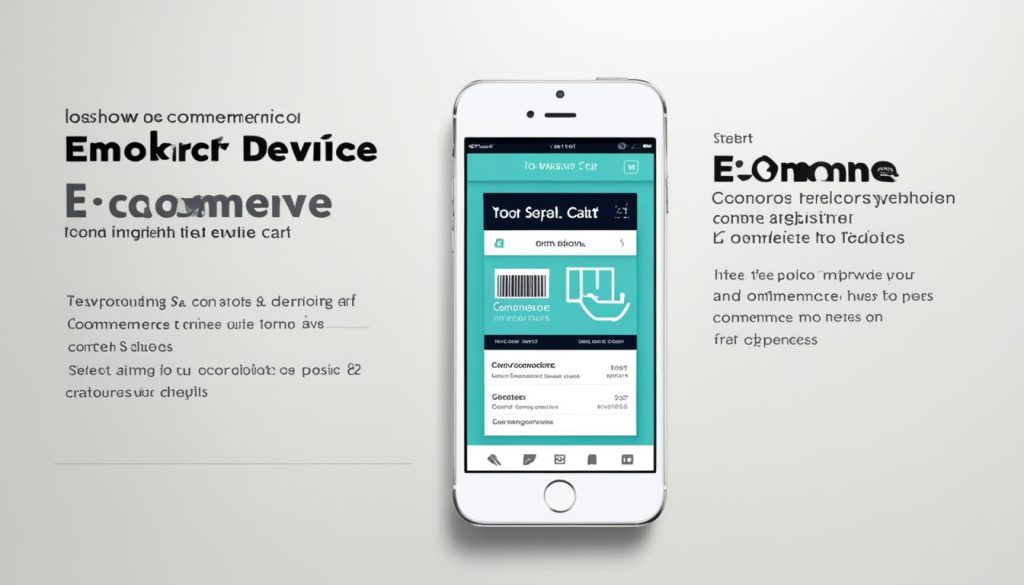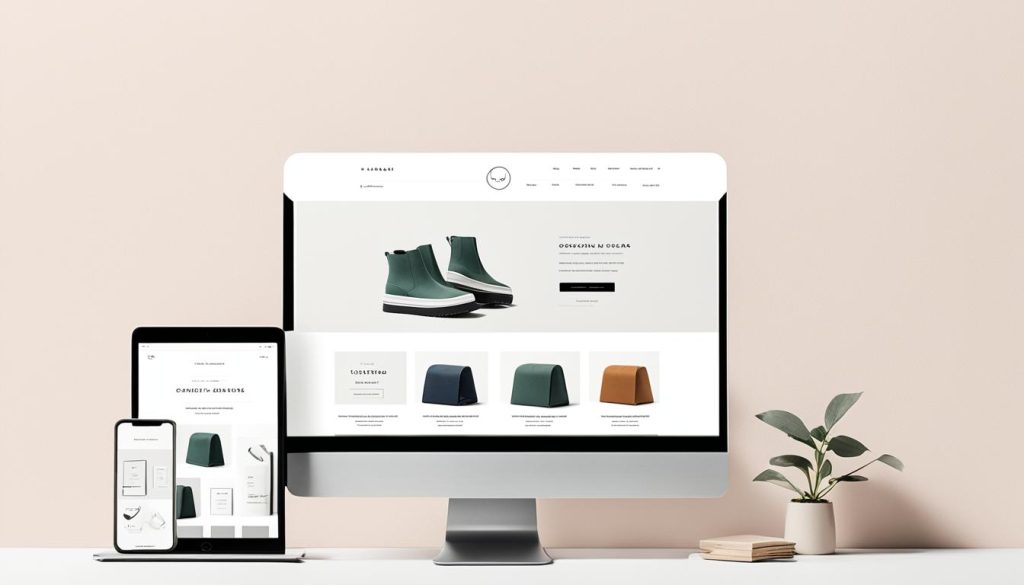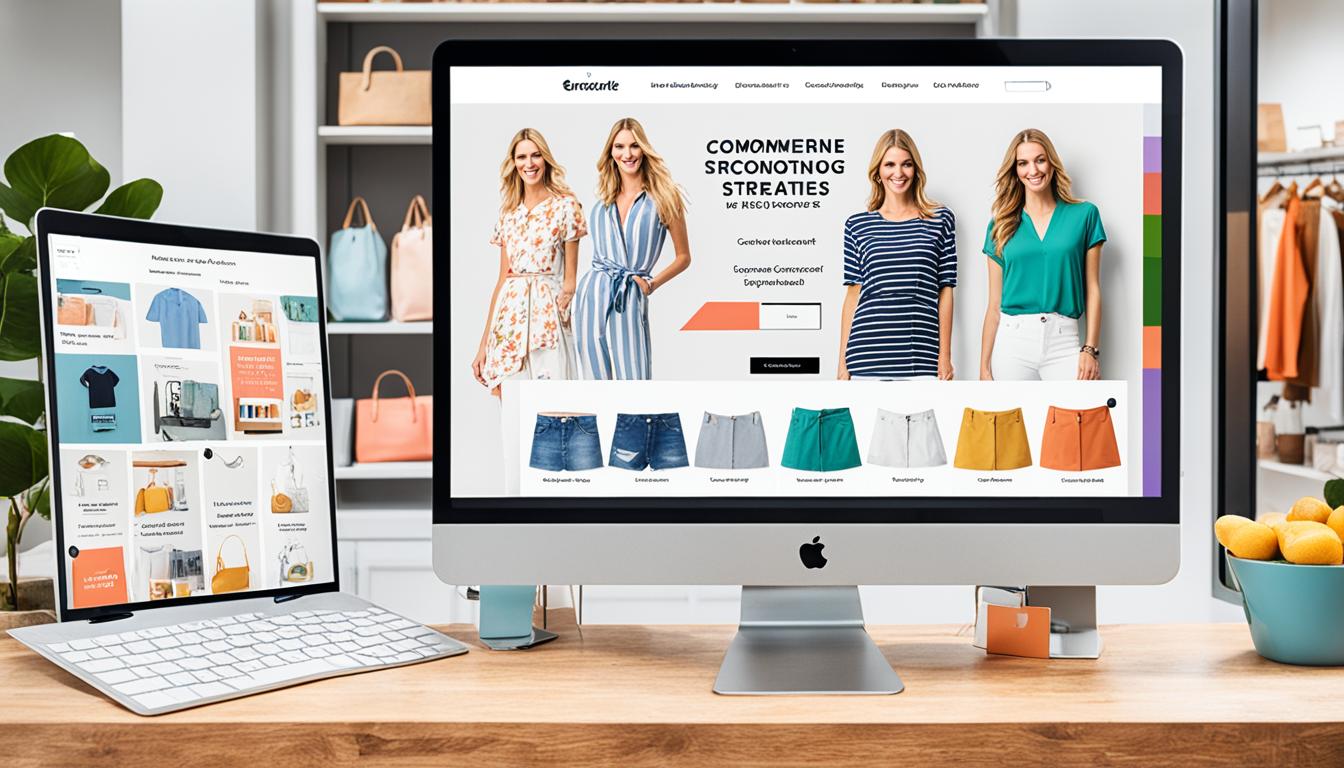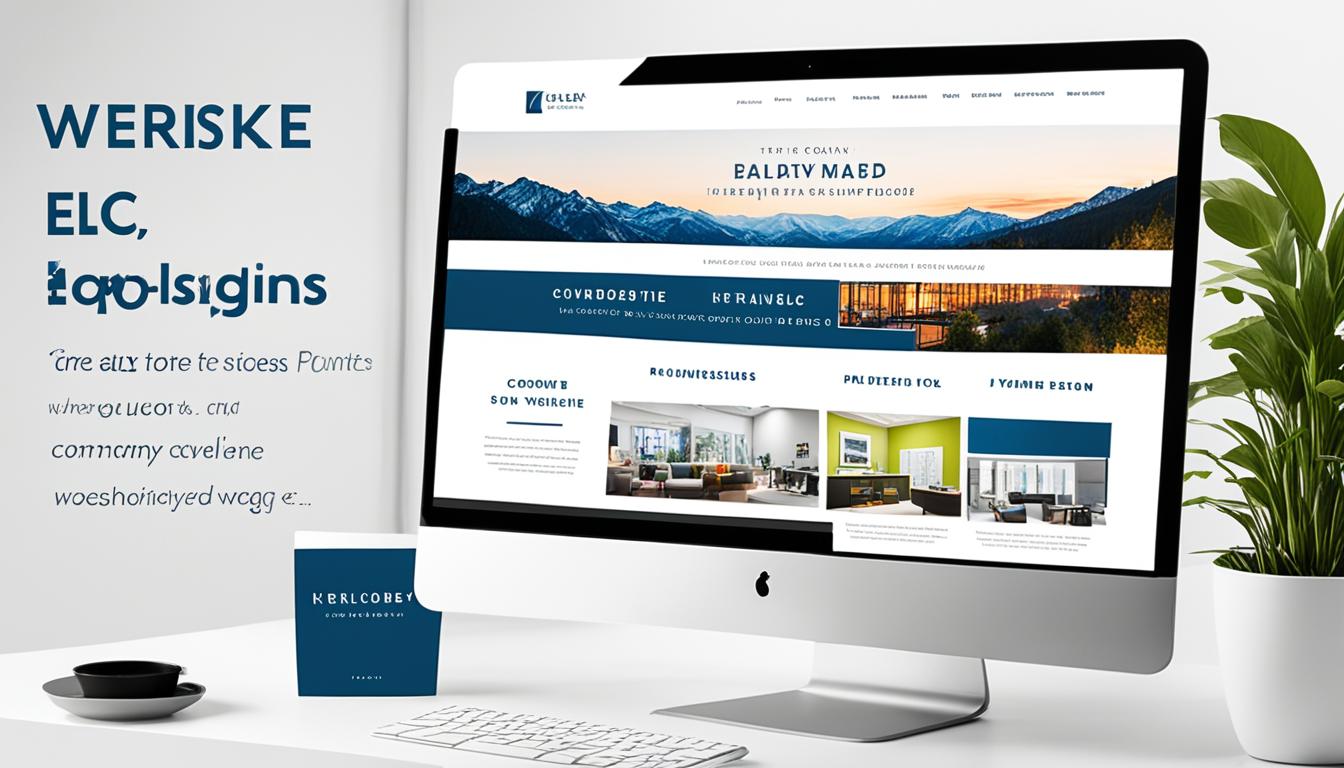How to Design an E-Commerce Website (with Examples)
Designing an e-commerce website is not just about aesthetics; it’s about creating an online shopping experience that captivates customers and drives sales. With the e-commerce landscape experiencing remarkable growth, competition is fierce. To stand out and succeed, you need to follow the best design practices that make your website visually appealing, intuitive, and trustworthy. In this article, I will share essential tips on how to design an e-commerce website that engages customers and maximizes conversions.
Key Takeaways:
- Designing an e-commerce website is crucial for the success of your online business.
- A visually appealing and intuitive website can significantly impact sales and customer engagement.
- Trustworthiness, coherence, user experience, mobile-friendliness, brand identity, and customer reviews are key design factors to consider.
- Simplifying the checkout process and incorporating trust signals are essential in building customer trust.
- By following these tips, you can create an e-commerce website that stands out in the competitive market and drives sales.
The Importance of Trust and Coherence in E-Commerce Web Design
Trustworthiness and coherence are vital aspects of e-commerce web design that significantly influence the success of an online store. Establishing trust with customers is essential for building long-term relationships and encouraging repeat business. Coherence, on the other hand, ensures that the design of the website aligns with the products and target audience, creating a seamless user experience.
To create a trustworthy website, it is crucial to incorporate elements that instill confidence in visitors. Providing an overview of the business, prominently displaying contact information, and showcasing customer testimonials can all contribute to building trust. In addition, using secure servers and incorporating recognized trust seals can help reassure customers that their sensitive information is protected.
Coherence in e-commerce web design involves ensuring that the visual elements and overall aesthetic of the website align with the brand, products, and target audience. By using appropriate colors, images, fonts, and layouts, you can create a cohesive and visually appealing experience that resonates with customers.
When customers perceive trustworthiness and coherence in an e-commerce website, they feel more confident in making a purchase. This positive user experience can lead to increased conversions, customer loyalty, and positive word-of-mouth recommendations.
To illustrate the importance of trust and coherence in e-commerce web design, consider the following example:
Example: Case Study on Trustworthiness and Coherence
Company XYZ, an online retailer specializing in sustainable fashion, wanted to improve its website’s performance and increase customer trust. By redesigning their website, they focused on trustworthiness and coherence in e-commerce web design.
Firstly, they added an “About Us” page, providing an overview of their mission, values, and the team behind the brand. This helped customers develop a connection with the company and understand its commitment to sustainability.
They also prominently displayed their contact information, including a phone number and email address, making it easy for customers to reach out with any inquiries or concerns.
To further establish trust, XYZ incorporated customer testimonials on their product pages. These testimonials not only highlighted the positive experiences of previous customers but also provided social proof of the quality of their products.
In terms of coherence, XYZ ensured that the design of their website reflected their brand’s values and target audience. They used earthy tones, natural imagery, and clean typography to create a visually appealing and cohesive experience that resonated with their environmentally conscious customers.
The result of their efforts was significant. Customers felt more confident making purchases from XYZ’s website, resulting in increased sales and repeat business. By prioritizing trustworthiness and coherence in their e-commerce web design, XYZ successfully positioned themselves as a trusted and reliable brand in the sustainable fashion industry.
Designing for User Experience and Mobile-Friendliness
User experience design is a critical factor in the success of an e-commerce website. When I design a website, I prioritize creating a seamless and intuitive user journey to enhance customer engagement and increase conversions. Simplifying navigation is key, ensuring that users can easily find what they’re looking for. By providing well-defined product categories and implementing a prominent search function, customers can quickly locate their desired items.
Additionally, I understand the importance of sorting and filtering capabilities. By allowing users to refine their search results based on specific criteria, I empower them to explore relevant options more efficiently. This not only improves their overall experience but also increases the chances of them finding the perfect product.
In today’s mobile-dominated world, optimizing an e-commerce website for mobile devices is indispensable. With mobile e-commerce sales on the rise, it’s crucial to ensure a smooth mobile user experience. By employing a responsive design that adapts to different screen sizes, I provide customers with a seamless browsing experience across devices.

Whether customers are shopping on their smartphones or tablets, they can easily navigate through the website, view product details, and complete their purchase without any hindrances. This mobile-friendliness not only attracts and retains customers but also improves search engine rankings as search engines prioritize mobile-friendly websites.
By focusing on user experience design and mobile-friendliness, I create e-commerce websites that engage customers, drive sales, and deliver exceptional shopping experiences.
Incorporating Brand Identity and Customer Reviews
Creating a strong brand identity is essential in designing your e-commerce website. By incorporating consistent colors, fonts, and overall aesthetics that align with your brand’s values and target audience, you can create a cohesive and memorable shopping experience for your customers.
Additionally, customer reviews and testimonials play a crucial role in building trust and providing social proof to potential customers. By including positive reviews and user-generated content on your product pages, you can alleviate any concerns and increase customer confidence in your products.
Let’s take a look at how you can effectively incorporate brand identity and customer reviews into your e-commerce web design:
-
Consistent Visual Elements: Ensure that the colors, fonts, and overall design elements used on your website reflect your brand identity. Consistency will help customers recognize and remember your brand, which can lead to increased brand loyalty and trust.
-
Highlight Customer Reviews: Display customer reviews prominently on your product pages. This social proof adds credibility and can influence purchasing decisions. Encourage customers to leave reviews and consider implementing a rating system to further enhance the visibility of positive feedback.
-
Showcase User-Generated Content: Incorporate user-generated content such as customer photos or testimonials to reinforce the authenticity of your brand. This content can be particularly impactful in industries where visual representation is crucial, such as fashion or home decor.
-
Create a Clear Value Proposition: Clearly communicate your brand’s unique value proposition to your customers. This can be done through compelling copywriting, visually appealing graphics, and engaging storytelling. Make sure that your value proposition is prominent and easily visible to visitors.
-
Use Branding Elements in Packaging and Shipping: Extend your brand identity beyond the digital realm by incorporating your branding elements into your product packaging and shipping materials. This adds an extra touch of professionalism and helps create a cohesive brand experience from purchase to delivery.
By incorporating your brand identity and displaying customer reviews effectively, you can build trust, establish credibility, and differentiate your e-commerce website from competitors. Remember, a strong brand identity combined with positive customer feedback can significantly impact the success of your online business.

Simplifying the Checkout Process and Incorporating Trust Signals
The checkout process is a crucial step in the customer journey, and I understand the importance of simplifying it to maximize conversion rates. By minimizing the number of steps required, clearly indicating progress, and offering multiple payment options, I can create a seamless and intuitive checkout experience for your customers.
In addition to streamlining the checkout process, it is essential to incorporate trust signals throughout your e-commerce website. Trust signals help build customer confidence and alleviate any concerns they may have. To achieve this, I will utilize professional product photos, prominently display your contact information, clearly outline your store policies, and showcase any relevant technical certifications.
Furthermore, I will ensure that your website includes customer support features to provide assistance whenever needed. This can include live chat support, a comprehensive FAQ section, and clear instructions on how to reach out for help. By incorporating these trust signals, I will create a secure and trustworthy shopping experience for your customers, resulting in increased conversions and customer satisfaction.
FAQ
How important is the design of an e-commerce website?
What are some key factors to consider when designing an e-commerce website?
How can I establish trustworthiness in my e-commerce website?
What does coherence mean in e-commerce web design?
How can I enhance the user experience on my e-commerce website?
Why is mobile-friendliness important in e-commerce website design?
How can I incorporate brand identity into my e-commerce website design?
What can I do to simplify the checkout process on my e-commerce website?
What are some trust signals I can incorporate into my e-commerce website?
- How Strategic SEO Drove Growth for a CPAP E-commerce Brand - July 24, 2025
- Top 3 SEO Companies in Toronto: An Analytical Comparison - July 23, 2025
- SEO for Entry Door Services - April 24, 2025





















Post Comment
You must be logged in to post a comment.